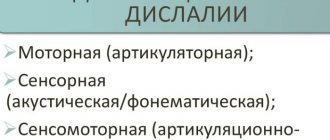Emotional intelligence (EQ, Emotional Quotient, Social Intelligence) is a concept close to IQ (intelligence quotient), but in which the basis is not a person’s intellectual abilities, but his ability to manage his own emotions and empathy for other people. The second common name for the same concept is social intelligence.
The Emotional Intelligence Assessment measures a range of aspects of emotional intelligence to predict your ability to understand and manage your emotions and predict the emotional reactions of others.
When used in testing applicants for a job, an EQ test can include a wide range of test questions, usually presented in the form of questionnaires or mini-cases - scenarios of specific work situations in the workplace. Each situation involves 2 or more parties who interact in some way in the workplace (colleagues, manager and subordinate, employee and client, etc.).
Emotional intelligence tests are widely used at work where a lot of communication is required every day - in call centers of banks and mobile operators, for the positions of operator, sales and customer support managers, as well as for managers at all levels, including the Russian government at the federal level. and regional level. For managers, the ability to recognize emotions and empathize is even more important - it is part of the required skills for effective management. Social intelligence tests are included in the Leaders of Russia tests, and specifically in the tests for managerial potential of the Leaders of Russia competition. You can learn more about the tests of the Leaders of Russia competition in our special articles How to prepare for the competition Leaders of Russia 2019-2020 and Testing for the managerial potential of the Leaders of Russia competition
The competition Leaders of Russia and Leaders of Russia.Politics in 2021 uses separate blocks of tests for emotional intelligence. They are designed to assess how experienced a leader you are, who can understand the emotions of other people (subordinates, colleagues, senior managers), and how effectively you are able to manage your emotions. These are quite long tests, lasting 30-40 minutes, the questions of which may be ambiguous.
The most popular and trustworthy tests for emotional intelligence are the Hall, Lucin, Guilford tests and the Mayer-Salovey-Caruso MSCEIT test, which has 144 control questions. The developers of such tests are all leading companies in the field of hr technologies: SHL, Talent Q, ECOPSY and others.
What does an emotional intelligence test measure?
Because EQ tests are used to assess a wide range of aspects of emotional intelligence, test questions vary depending on which component of emotional intelligence they measure.
Most emotional intelligence tests measure all or only some of the following components:
- Ability to recognize emotions from facial expressions;
- Ability to understand and use emotions to predict the behavior of others;
- The ability to determine people's emotions by their behavior;
- The ability to understand how certain actions contribute to emotions in ourselves and others;
- Ability to identify types of emotions;
- The ability to understand how to use emotions to facilitate interactions between people;
- Ability to understand the nature of different emotions.
Measurement problem
Thus, two main approaches to measuring EI can be distinguished. There are heated discussions around them in modern literature. Critics of the use of “objective” tests, consisting of items with one correct answer, similar to traditional intelligence tests, point out that the main difficulty with this approach is the lack of a convincing basis for determining the correct answer. For example, on what basis can one say what emotion is experienced by a character in a story or a person depicted in a photograph? To answer questions of this kind, it is proposed to use the following approaches: - expert assessments (but many authors believe that there is no convincing criterion for selecting experts in this field), - assessments of the majority of subjects (but this contradicts the very idea of tests of intelligence and abilities, especially in the case of difficult tasks, which a minority of the sample should be able to cope with), is the opinion of the developers of test tasks, for example, actors imitating emotions when creating test material, or artists creating images with certain emotions (but it is doubtful that actors or artists accurately enough depict emotions, in addition, there is a high probability that they exaggerate and stereotype them, which reduces the ecological validity of the test material). The problem of choosing the correct answer remains unsolved, while different methods of solving it using the same test material often give results that are poorly consistent with each other.
Another methodological approach to measuring EI is to use questionnaires. Its main drawback is its reliance on self-report, which contradicts the attempt to measure EI as one of the types of intellectual abilities. One of the problems with using EI questionnaires is that they tend to correlate weakly with intelligence tests and much more closely with personality questionnaires. In this regard, critics have suggested that EI questionnaires measure nothing more than some combination of personality traits. A more detailed analysis of the psychometric properties of techniques representing these two approaches to measuring EI shows that they are weakly correlated with each other, and the patterns of their correlations with techniques that measure other constructs do not coincide sufficiently. Therefore, it can be assumed that these two types of techniques measure either quite different constructs altogether, or, at best, different aspects of EI. It seems that in the current situation, it is optimal to use simultaneously different methodological approaches for assessing EI in practical and research work.
Examples of emotional intelligence tests
Let's look at the following simple emotional intelligence test question:
Lilia felt stressed and anxious as she thought about all the work she needed to do. When her manager assigned her another extra project, she felt ____. (Choose the best option.)
a) stunned
b) depression
c) shame
d) shyness (awkwardness)
d) fright (panic)
The correct answer is “depression.” Lilia felt stressed before her manager assigned her a new job. Extra work assigned to her when she was already stressed only intensified this feeling and made her feel depressed.
Next, let's look at several examples of emotional intelligence tests, given in the form of mini-cases.
The most well-known methods in Russia for measuring emotional intelligence
The following methods for measuring emotional intelligence are currently known:
Hall test
The most widely used method is M. Hall, which was introduced by E. P. Ilyin. It is almost identical to the EQ technique. The technique consists of 30 statements, divided into 5 scales:
- emotional awareness,
- managing your emotions,
- self-motivation,
- empathy,
- recognizing other people's emotions.
The answer to each statement requires a 6-point scale: from –3 – “completely disagree” to +3 – “completely agree”. However, I. N. Andreeva, describing this questionnaire, notes some discrepancy between the semantic load and the name of the scales. She views managing one’s emotions as emotional flexibility, self-motivation as the voluntary control of one’s emotions, and recognizing the emotions of other people as the ability to influence the emotional state of other people. It is also worth noting the lack of any information on the psychometrics of this test, both during its creation and during translation. This deprives the right to consider this technique as an adequate and valid means of measuring emotional intelligence. From this point of view, its widespread distribution is surprising.
Self-report test
The Self Report Emotional Intelligence Test (SREIT) technique, designed on the basis of the early model of J. Meyer and P. Salovey. Schutte and colleagues (Schutte et al., 1998). It consists of 33 statements, divided into 3 scales:
- assessment and expression of emotions;
- emotion regulation;
- using emotions to solve problems.
Answers are given on a 5-point scale: from 1 – “this is not about me at all” to 5 – “this is definitely about me.” Scale scores are obtained by summing the scores obtained by key. This questionnaire showed fairly good psychometric properties during construction: internal reliability (Cronbach's α = 0.90), test-retest reliability of 0.78, and apparent discriminant validity. The only disadvantage of this technique is its vulnerability to socially desirable responses from subjects. Also, nowhere is there any data on conducting psychometrics after translating the methodology into Russian and adapting it to a Russian-speaking sample. However, the undoubted advantage of this technique is its ease of use and processing.
Emotional IQ
EmIQ-2 is a technique created in Russia. Work on the test began in 2004. The initial version of the test (“Emotional Intelligence-1”) was created by E. A. Orel on the basis of Western research on this topic. Further development of the “Emotional Intelligence-2” test was carried out by V. V. Odintsova under the scientific supervision of A. G. Shmelev. The version of the technique used in practice (“Emotional Intelligence-2”) consists of 66 questions, each of which has five answer options. These questions are grouped into six scales:
- total score (total score on all scales);
- introspection and self-defense (the scale reflects the respondent’s ability to soberly assess their strengths and weaknesses, recognize and understand their emotions, and the ability to build a certain “psychological defense” from troubles);
- self-control (the scale reflects the respondent’s internal motivation, self-discipline, and perseverance in achieving goals);
- expression of emotions (the scale reflects the respondent’s ability to adequately express and control their emotions and respond appropriately to other people’s expressions of emotion);
- social sensitivity (the scale reflects the respondent’s ability to correctly understand and evaluate the motives behind the behavior of the people around him, and to respond adequately to them based on this understanding);
- self-assessment of sensitivity (the scale reflects the respondent’s assessment of his own qualities: sensitivity, insight, understanding of the motives of behavior of others).
Standardization of the existing version of the methodology was carried out on a wide sample of volunteers who performed the Internet version of the method in its research version on the website of the HR Laboratory “Humanitarian Technologies” (over 600 protocols).
It is worth noting the great practical orientation of this technique. Psychodiagnostic studies of the personality of adults are considered as the scope of its application in order to identify areas of psychological assistance, self-knowledge, as well as use as an additional diagnostic tool in the selection and assessment of specialists whose field of activity is directly related to communication (executives, sales managers, business trainers, etc.).
Lucin test
The EmIn test by D. Lyusin is based on the author’s own model of emotional intelligence. Emotional intelligence is defined as the ability to understand and manage one's own and others' emotions. Both the ability to understand and the ability to manage emotions can be aimed at both one’s own emotions and the emotions of other people. Thus, the author introduces the concept of intrapersonal and interpersonal emotional intelligence, which involve the actualization of different cognitive processes and skills, but must be related to each other. True, the definition proposed by D. Lyusin echoes the model of H. Gardner, who believed that emotional intelligence is part of social intelligence. Personal intelligence is divided into inter- and intrapersonal, which involves knowledge about oneself and others.
Based on this model, a test is proposed consisting of 40 questions with answers on a 4-point scale, which are grouped into 6 factors:
- Interpersonal emotional intelligence: Scale M1. Intuitive understanding of other people's emotions
- M2 scale. Understanding other people's emotions through expression,
- MZ scale. General ability to understand other people's emotions.
- Scale B1. Awareness of your emotions
The proposed model of emotional intelligence, according to the author, is fundamentally different from mixed models in that the construct does not include personal characteristics that are correlates of the ability to understand and manage emotions. It is allowed to introduce only such personal characteristics that more or less directly affect the level and individual characteristics of emotional intelligence. However, this technique cannot be attributed to ability models due to the fact that it is a questionnaire based on self-report. Work on standardization and study of the psychometric indicators of this test continues, so it is difficult to judge the reliability and validity of this technique. In parallel, D. Lyusin is working to create a new version of the test, which will add a scale measuring the ability to manage other people’s emotions, clarify the content of the scales to increase their reliability, and continue to collect data to test the validity of the questionnaire.
Meyer-Salovey-Caruso test
In 1990, P. Salovey and J. Meyer proposed their model of emotional intelligence, publishing an article on this topic. They proposed a formal definition of emotional intelligence as a set of skills related to accurately assessing one's own and others' emotions, as well as expressing one's emotions, using emotions, and effectively regulating one's and others' emotions. Accordingly, it has been proposed that emotional intelligence consists of the following categories of adaptive abilities:
- Assessing and expressing emotions: Assessing and expressing your emotions: Verbal
- Nonverbal
- Nonverbal perception
- Their
- Global planning
By 1997, John Meyer and Peter Salovey refined and expanded their model of emotional intelligence. The revised model places new emphasis on the cognitive component of emotional intelligence associated with the processing of information about emotions. Also in this model there was a component associated with personal and emotional growth. In light of these changes, the concept of emotional intelligence has received a new definition - as the ability to process information contained in emotions: to determine the meaning of emotions, their connections with each other, to use emotional information as a basis for thinking and decision-making:
Bar-On Questionnaire
R. Bar-On's model gives a very broad interpretation of the concept. He defines emotional intelligence as all the non-cognitive abilities, knowledge and competence that enable a person to successfully cope with various life situations. R. Bar-On identified five areas of competence that can be identified with the five components of emotional intelligence; each of these components consists of several subcomponents:
- Knowing yourself: awareness of your emotions, self-confidence, self-esteem, self-actualization, independence.
- Interpersonal skills: empathy, interpersonal relationships, social responsibility.
- Adaptability: problem solving, connection to reality, flexibility.
- Managing stressful situations: stress tolerance, impulse control.
- Predominant mood: happiness, optimism.
R. Bar-On developed a questionnaire to measure emotional intelligence called EQ-i and consisting of 133 statements. This questionnaire consists of 15 scales corresponding to the above subcomponents. It should be noted that the basis for the proposed model is the author’s professional experience and literature analysis, but not any empirical data that could confirm the legitimacy of identifying these particular subcomponents.
Thus, the concept of emotional intelligence is currently being actively developed from both theoretical and applied points of view. Further research and exploration in this area may show the viability and value of this concept.
Recommendations for solving emotional intelligence tests
Many job seekers find the emotional/social intelligence test very difficult for the following reasons:
- Test questions may be ambiguous
- Test questions require people to deal with situations outside their comfort zone (conflicts)
In our experience, the two most challenging tasks in EQ tests are the ability to recognize and identify emotions expressed non-verbally and the ability to predict people's emotional reactions. Skills of this kind come only with long-term practice in communicating with people.
But you can learn how to pass EQ tests. As always, the key is practice and experience.
Social/emotional intelligence tests are designed to involve you emotionally in a situation and thus elicit a spontaneous response from you based on your experience and intuition. However, the only winning strategy is to study the situation calmly and detachedly in order to understand the goals and state of the parties and weigh the available options. Think carefully about what you want to show the employer by choosing one answer option or another.
Your goal when taking EQ tests is to demonstrate that you can recognize and understand other people's emotions. Therefore, we recommend that when selecting answers, you prioritize respect for the feelings of people as demonstrated in the test script. The worst answer choice is one that ignores the other party's opinion.
In each test, not 1, but 3-4 parameters are usually studied. For example, in addition to recognizing and respecting other people's emotions, you may be required to demonstrate skills such as:
- persuasiveness
- persistence in achieving results
- loyalty to the company and consideration of its interests
- flexibility
- effective communication skills
- ability to find solutions
- good faith
- accuracy
All these skills can and should be demonstrated in such a way that the interests of all parties to the conflict, which is described in the EQ test scenario, are taken into account.
Let's look at some examples of emotional intelligence tests. In these tests, in order to successfully pass the test, you need to find a balance between taking into account the emotional state of the interlocutor and solving a specific work task.
Example of a personality test for EQ 1
The correct answer and detailed explanation of this test can be found at the end of the article. We recommend that you first try to take the test and determine the correct answer yourself.
Example of a personality test for EQ 2
The correct answer and detailed explanation of this test can be found at the end of the article. We recommend that you first try to take the test and determine the correct answer yourself.
Emotional intelligence: how to develop it and improve your quality of life
Transformational trainer, MGIMO speaker and coach Evelina Levi told HiPO what emotional intelligence is, why modern HR specialists highly value this skill and what advantages emotional intellectuals have in everyday life.
Evelina Levy,
coach
Emotional intelligence (EI, EQ) is the ability to recognize emotions, evoke them at the right time and manage them. This applies to both your own emotional mood and the mood of other people.
There are many tests that determine EI scores: Hall, Goleman, Lucin, Sayer-Salovey-Caruso, Stein, Manoilova, and so on. The results are assessed on a scale from 0 to 100. A level of 60–70 points is considered average. I like the Hall test better than others. By the way, on its basis, I developed a test that students of my educational platform take before starting training.
In 1964, Professor Howard Gardner, in his research, first spoke about the fact that in addition to analytical intelligence, there is also sensory intelligence, later called EQ. Many scientists have tried to give it a clear definition: for example, Peter Salovey and John Mayer. But the book by journalist and psychologist Daniel Goleman, with whom I studied, became revolutionary. Goleman found that the level of development of EI is determined by several factors:
self-awareness
self-regulation
motivation
empathy
communication skills
People with developed emotional intelligence, all other things being equal (good memory, ability to concentrate, and so on), are more likely to achieve success in both personal and professional spheres. They understand themselves and their needs better, see strengths and weaknesses, interact with others more easily, and do not allow troubles to affect their general condition, unsettling them.
In 2020, EI was included in the top five most valuable skills according to international companies. The recruiting portal Career Builder found out that 71% of HR specialists believe that a developed EQ is more important for a candidate than IQ.
And 59% of recruiters are not ready to hire a person with low emotional intelligence, even if he demonstrates extraordinary mental abilities.
Productivity also directly depends on EI. This is especially noticeable during force majeure or time pressure. In such situations, a person must not only do the work, but also be able to pull himself together and get his bearings.
If we talk about ordinary life, it should be noted that the development of emotional intelligence is a way of working with fears and the inner critic that prevents us from growing.
EQ and IQ: what is more important
There is a myth that emotional intelligence is innate. Of course, a person can have abilities, as if he was good at mathematics or drawing from childhood. But still, EI is a skill that can and should be developed. Such as memory, concentration and other cognitive qualities.
Also, despite the research above, there is a misconception that EQ is not as important as IQ. It is not true. Which leg is more important - the right or the left? Both are important. Without developed thinking, you will not be able to study, plan, build a system of priorities, and without EI you will not be able to use the acquired knowledge with maximum benefit.
Any skill, be it EQ or riding a bike, requires mastery. Developed cognitive abilities are needed: memory, attention, thinking, the ability to perceive information and apply theory in practice. In this sense, IQ can be considered the basis for the formation of emotional intelligence.
On the other hand, without developed emotional intelligence it is difficult to achieve high results in mental activity. Let's say you are faced with a difficult task. You need to concentrate and put in all your strength. And you are emotionally drained. Without the energy that emotions provide, you cannot achieve the necessary concentration.
DARIA BELOGLAZOVA Subscription to all “Your Om” courses (1 month) 990 ₽
MYTH Never eat alone RUB 592
Emotional Intelligence and Communication
There is no need to set yourself the goal of changing the environment - as EI develops, this can happen naturally. It is difficult to be around people who do not meet our communication needs. You will instinctively be drawn to those who are close to you in spirit.
A high level of EI is manifested in behavior. This is the ability to cope with a stressful situation, understand the interlocutor and sympathize with him, but not allow him to “sit on his neck.”
Regarding emotional intelligence in men and women, there are different studies with conflicting conclusions. It is believed that due to maternal instinct, women have higher levels of emotional intelligence than men. Plus, women are supposedly more emotional, which means they have to deal with it. While men are distinguished by composure, rationality, and a tendency to push experiences inside. But we understand that these are just stereotypes... After all, in childhood, the differences between boys and girls are almost invisible.
Raising emotional intelligence in children
Children copy the behavior of adults, and nothing can teach them better than personal example. It is important to understand for yourself and explain to your child: there are no bad emotions. Do not criticize children for anger, resentment, or whims.
It is much more useful to state emotions: “I see that you are angry,” “I think you are ashamed.” Then the child understands what is happening to him, and it is easier for him to learn to manage his condition.
There are children's versions of emotion diaries. Every day, the baby needs to choose an emoticon that best conveys his feelings, or exercises and games that increase the level of awareness. For example, come up with a story in which a character encounters difficulties and becomes angry, offended, scared (these can be any emotions that you want to work through). And decide what is best for the fictional hero to do.
Together with your child, you need to learn not to throw out emotions, but to direct them in a useful direction. For example, in physical activity or creativity.
How to recognize high or low EI levels
In everyday life, a low level of EI is indicated by the inability to manage oneself. A person easily loses his temper, he is influenced by others, he is embarrassed to express resentment or love.
Emotional intellectuals, on the contrary, are less likely to succumb to panic and other people’s attempts to spoil their mood, know their emotional “weaknesses” and, instead of struggling with breakdowns, know how to prevent them. They are more receptive to the words and feelings of others (although they do not allow themselves to be manipulated), they are ready to give, and not just take. They adapt to change more easily.
It is believed that only 15% of people have high emotional intelligence. For example, Angelina Jolie gives the impression of just such a person. She shows sensitivity and compassion. Seems energetic, adaptive, aware. Based on what we know about the actress, we cannot say that she is prone to hysteria or sudden mood swings. However, she is not afraid to express emotions.
MYTH Don't interfere with your life. 632 RUR
HOLI YOGA& CAFÉ Subscription for 8 yoga classes at Holi Yoga& Cafe 7,300 ₽
Managing Emotions
You cannot control or suppress emotions. You simply won’t succeed: at some point they will take over and break out, sweeping away everything in their path.
Emotions need to be managed - environmentally, consciously, carefully. For example, when you are at your limit, tell yourself: I am angry because... This way you will concentrate on the problem, switch from emotional to rational.
Also, as I already said, you can direct the energy that emotion gives into a creative direction. The best thing is physical activity. Wash the dishes, do some squats, go for a run with the dog. The main thing is not to overload the body, otherwise you will feel empty.
Emotions obey the law of compensation: a rise is necessarily followed by a decline, and vice versa. It is important to maintain balance.
One of the important components of EI is awareness. Therefore it is useful to meditate. Practice calms, makes the connection between the body and emotions tangible, tangible, teaches you to receive and use energy.
It depends only on you how stable your emotional intelligence is. It requires constant training. Observe your state, increase your awareness (that is, understanding why and for what purpose you act this way and not otherwise), look for the connection between what is happening around you and your reaction. All this makes it possible to prevent unpleasant excesses, rather than deal with them when emotions are already going through the roof.
Even difficult trials will not be able to “finish” you if you work on emotional stability.
How to develop emotional intelligence
EQ develops in three stages:
— at the first stage, learn to distinguish and name emotions. There are about 80 of them, but most of us know only 10. I have an alphabet of emotions, it contains not only the emotional states themselves, but also a scale of severity, showing how energetically charged they are. For example, rage, ecstasy or euphoria give maximum energy, and disgust or grief - minimum (you are in decline);
- at the second stage, you study emotions - why they arise and how they manifest themselves. Journaling can help here. Every day, every 2-3 hours, write down how you feel, what events and people influenced you, where you are at this time and what you are doing. This is how connections are built between events and emotional reactions to them. Soon you will understand yourself better and learn to predict emotional outbursts;
- move on to managing emotions - this is a separate layer that cannot be described in a few words.
I advise you to read Daniel Goleman’s book “Emotional Intelligence. Why it can matter more than IQ" and "Emotional intelligence at work." There are few practical guides on EI, but, putting modesty aside, I also recommend my training book “The Practice of Managing Emotions,” in which I tried to provide a step-by-step and structured plan for the development of EQ.
There are exercises for each component of EI. For example, to better understand the feelings and emotions of others and increase empathy, you can try the mirror method. Try to copy facial expressions, gestures, head position and gaze of the other person as realistically as possible. Then you will probably feel the same as he did. Of course, this needs to be done alone with yourself.
To work with your own emotions, use breathing practices and the 10-second technique (in a stressful situation, count to ten before reacting).
However, everything is individual: what helps one person may not be effective for another, and vice versa. In any case, EQ development begins with the three stages that I described above. Try it - it's interesting.
What parameters are considered when evaluating EI tests?
There are a number of characteristics by which personality can be assessed. For example, in the “Emotional Intelligence” course we study the following components:
- The ability to express emotions. Display true and desired emotions on the face.
- Emotion assessment. Understanding and analyzing one’s own and others’ emotions.
- Using emotions in reasoning. Awareness of how we make decisions in a particular emotional state.
- Understanding the causes of emotions. Our body, our psyche reacts to different events with different emotions.
- Managing emotions. Whatever emotion you experience, you have a choice of how to express it.
Download the manipulation guide
“10 ways to protect yourself and avoid manipulation”
Receive for free in a convenient messenger
In what cases are EI tests used?
- When selecting training for employees.
Most people have difficulty understanding their emotions and their impact on business processes and life. Modern adults, from low-level managers to senior executives, tend to suppress emotions. They cannot always manage them promptly. There are many limiting prejudices, patterns of “good” and “bad.” Often people are unhappy with the way they deal with their emotions. It is not always possible to describe the situation without judgment, to maintain a state of calm during a stressful conversation and not send the interlocutor into deep defense. And how difficult it is sometimes to maintain composure in a situation of conflict, “attacks” and claims!
I do not recommend relying on EI tests when applying for jobs. The best thing that can be done in this case is to take a test that predicts possible work behavior and difficulties that a particular employee may experience. Of the available international tools translated into Russian, try the EBW (Emotions & Behavior at Work) test.
When selecting candidates for a high position, it is important to diagnose the connection with the tasks that the future leader will have to solve. For example, the ability to take into account the emotional aspects of interaction when introducing changes, the ability to make non-standard decisions. One of the risks when analyzing a person is the “control = suppression” trap. A person can create an image of confidence and calm, suppressing his emotions. What does this mean? Possible breakdowns, decreased effectiveness due to suppression of emotions.
- During self-diagnosis.
There are several basic models of emotional intelligence and basic tests for them. The MSCEIT test is considered an adapted test, but, as for me, it has a number of cultural features that were not taken into account during translation and adaptation to our individual. You can also use the British EBW (Emotions & Behavior at Work) test, the Lucin or Hall questionnaire.
When answering questions, pay attention to the points (statements) for which you scored the lowest number of points - this will be the starting point of your immediate development.
Do you want to develop emotional intelligence?
If you decide to develop emotional intelligence and realize its importance, a professional can help you with this. For example, in our “Emotional Intelligence” course we have the opportunity to independently study lessons, accompanied by a curator and under my supervision, among other things. Sometimes it is useful to hear an objective opinion from a specialist, so as not to wade through the jungle of useless information yourself.
Do you think it’s worth learning emotional intelligence or can you develop it yourself? How do you resolve this issue?
- Business
- Case
- Recruitment
- Profiling
- Negotiation
01.08.2018
1 Comment








